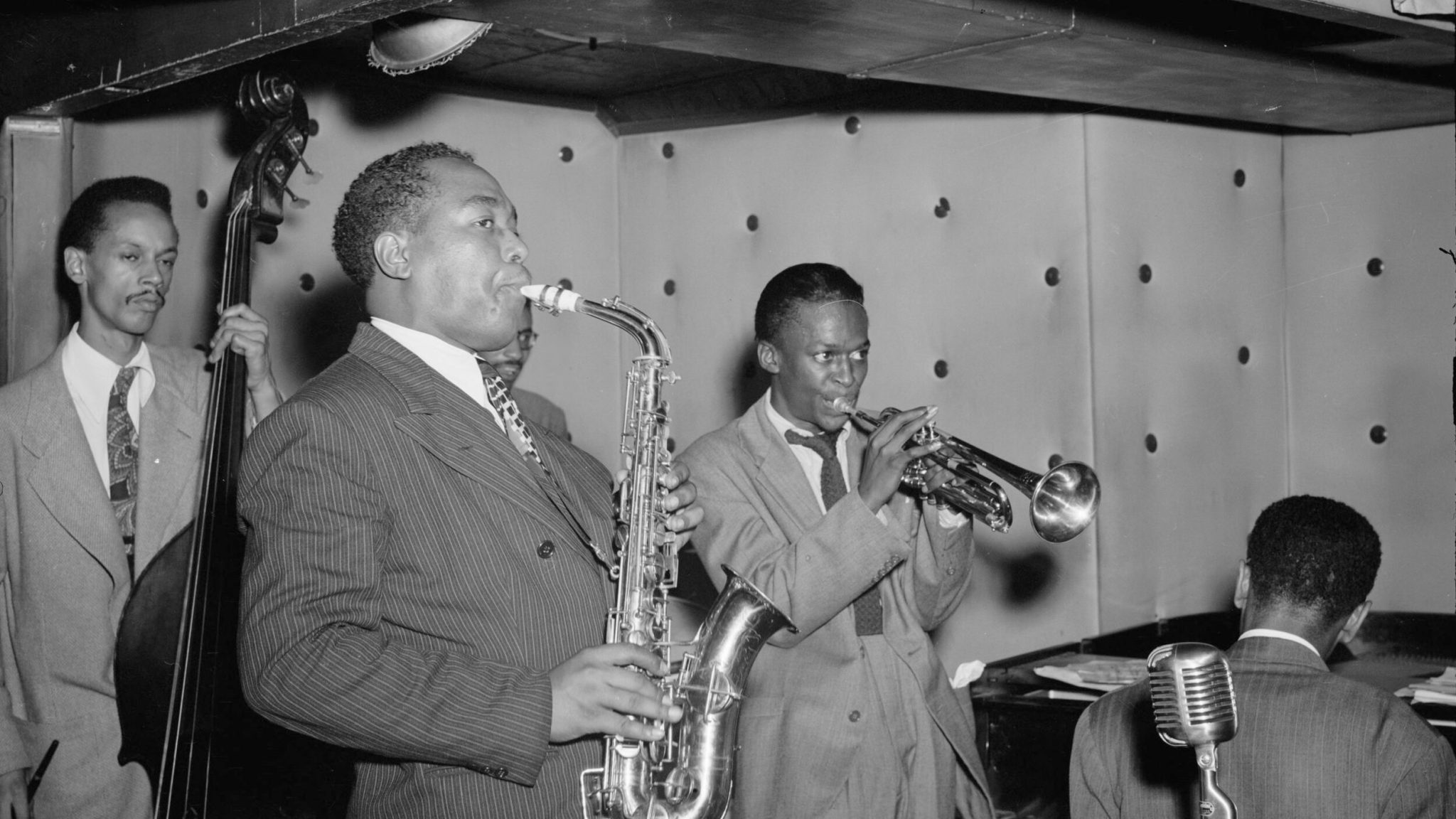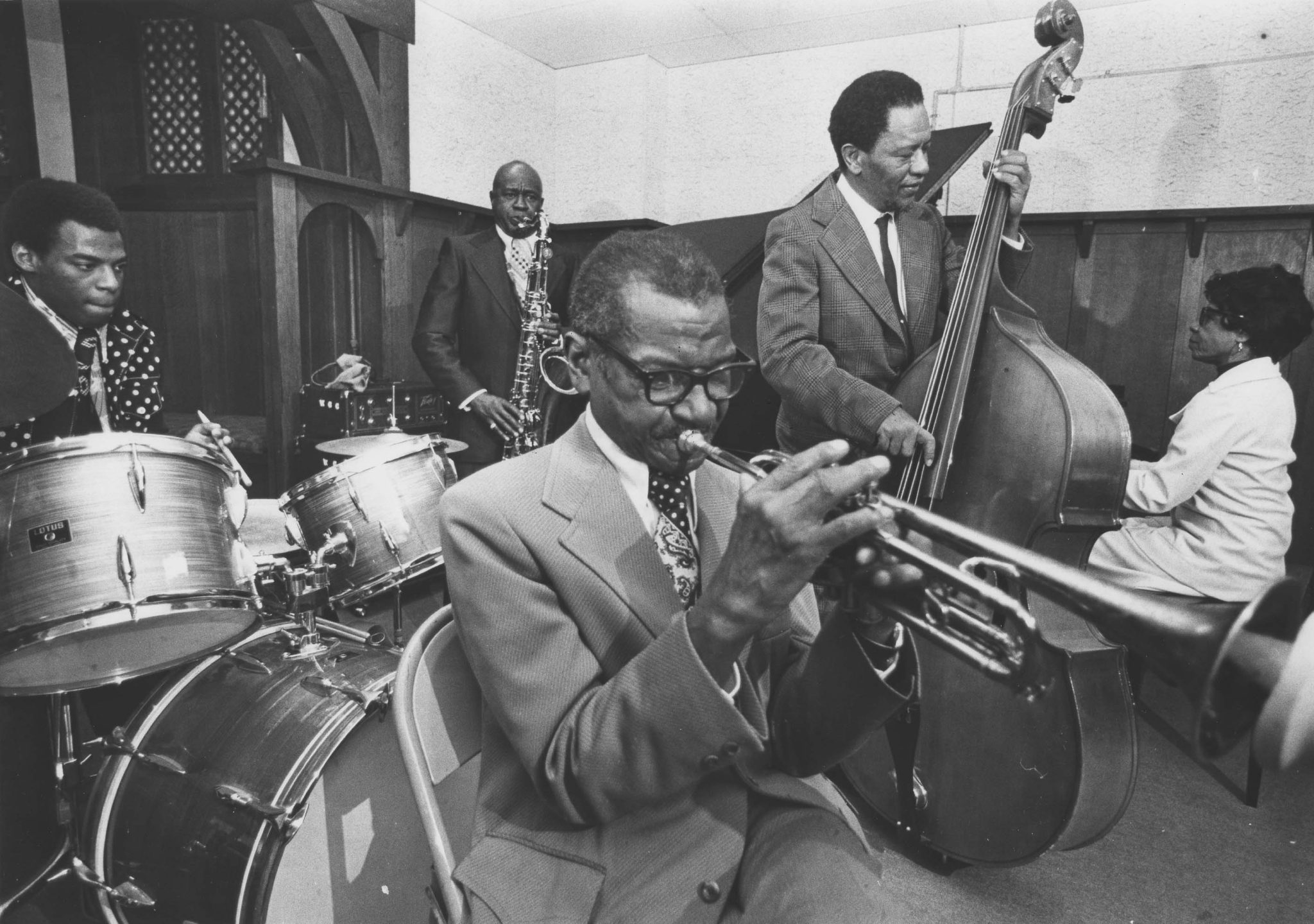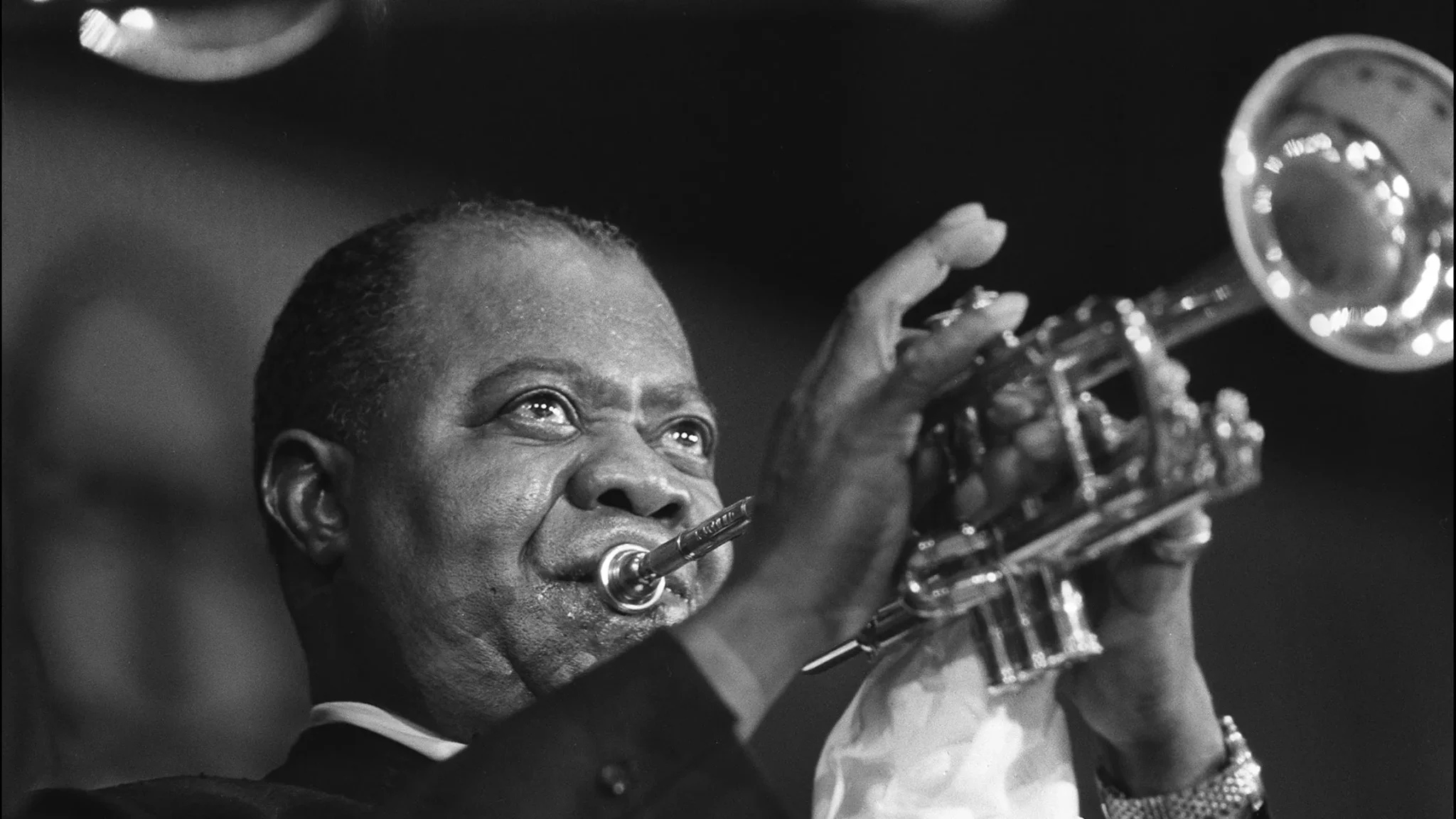Hey there, music lovers! Have you ever wondered how jazz became the cool, exciting music we know today? It all started way back in the lively city of New Orleans.
People from different places came together, bringing their special sounds and beats. African drums, European pianos, and American creativity combined to make something new and awesome.
It can be amazing and confusing for those who want to learn about jazz’s beginnings and how it grew.
But don’t worry! Come along with us as we explore the interesting story of jazz, from its small start to becoming loved worldwide.
We’ll examine the important parts and people who made jazz what it is today and changed music forever. Get excited to explore the world of jazz!
The Origins and Historical Development of Jazz
Jazz emerged from blending African and European musical traditions in New Orleans in the late 19th century.
It then spread and evolved through different eras, such as the Jazz Age, Swing Era, Bebop, and beyond, with influential pioneers shaping the genre.
1. Cultural Diversity of New Orleans
New Orleans was the perfect melting pot for the birth of jazz music. The city brought together people from diverse backgrounds, each contributing their unique musical traditions and styles.
This cultural mixing created a fertile ground where musical influences like blues, ragtime, and folk tunes could blend harmoniously.
An important catalyst was Congo Square, a gathering place where African slaves could freely share and merge African, Caribbean, and American musical ideas.
This blending of rhythms and melodies from various places gave rise to the distinctive sound of early jazz.
Moreover, one defining feature that set jazz apart was the introduction of improvisation – musicians making up original tunes and rhythms spontaneously instead of following set compositions.
This creativity and free-flowing expression in the moment integrated the innovative spirit of jazz music.
2. Early Jazz Pioneers
Several pioneering figures played major roles in shaping and popularizing jazz in its early days.
Buddy Bolden, the first true jazz musician, made jazz a sensation in New Orleans during its formative years. His innovative style and performances laid the groundwork for jazz’s evolution.
Another monumental figure was Louis Armstrong, whose craftmanship as an instrumentalist and improviser earned him the title “Father of Jazz.”
Armstrong’s innovative approach transformed the way jazz was played and perceived.
Additionally, on February 26, 1917, the Original Dixieland Jass Band (ODJB) made history as the first jazz ensemble to record its music.
This introduced the fascinating sound of jazz to audiences nationwide and inspired its spread beyond New Orleans.
The Importance of Jazz in Music History

Jazz proved highly influential, lending its creative spirit to other musical genres while championing improvisation and individual expression.
Its diverse sub-genres and ability to continually reinvent itself bind jazz’s enduring cultural impact.
Jazz as a Motivation for Musical Innovation
Jazz has motivational musical innovation, reshaping and inspiring countless other genres. Its ability to merge diverse musical traditions and cultures has encouraged a rich, strong match of ideas.
Jazz’s influence can be heard in rock, pop, classical, and various other music forms, leaving an unfading mark on the artistic landscape beyond just the realm of music, impacting dance, visual arts, and cinema.
As jazz continued to evolve, it branched into distinct subgenres like Bebop, Swing, and Fusion, showcasing its adaptability and willingness to adopt new artistic expressions in step with the changing times.
Jazz Icons and Their Legacies
When exploring the rich tapestry of jazz history, certain iconic figures stand out as true giants of the genre. Names like Charlie Parker, Miles Davis, and John Coltrane are revered for their groundbreaking contributions and enduring legacies.
Each of these legendary musicians brought a unique sound and innovative approach that captivated audiences worldwide.
Beyond their musical expertise, these jazz icons profoundly impacted music theory and improvisation techniques, introducing novel concepts in harmony, rhythm, and spontaneous expression that redefined the art form’s boundaries.
Their influence transcended geographical borders, inspiring musicians from diverse cultures and giving rise to global jazz movements and schools of thought that continue to shape the genre’s evolution.
Jazz’s Role in Shaping the African American Community

Beyond entertainment, jazz provided a voice for African American cultural identity, freedom, and entrepreneurship. It drove social movements, created economic opportunities, and fostered community bonding through gatherings and venues.
1. Jazz as a Voice of Cultural Identity and Freedom
Jazz is more than just a musical genre; it has been a powerful symbol of cultural identity and freedom for the African American community.
During times of suffering and struggle, jazz provided a voice for African Americans, allowing them to express their experiences, hopes, and resilience through music.
This art form became a key part of African American culture, celebrating their heritage and serving as a means of artistic expression.
Jazz During the Harlem Renaissance
The Harlem Renaissance of the 1920s was a critical cultural movement, and jazz played a crucial role in its development.
Jazz musicians used their music as a medium to reflect the social and cultural shifts of the time, and their art became a representation of the vibrant African American community in Harlem.
Iconic figures like Duke Ellington and Ella Fitzgerald entertained and influenced the artistic landscape, inspiring creativity and innovation across various disciplines.
Influence on Civil Rights Movements
As the struggle for civil rights gained momentum, jazz music and its leading figures became powerful voices of resistance and empowerment.
Musicians like John Coltrane and Charles Mingus used their platforms to advocate for change and justice, with their music serving as anthems of the movement.
Songs like “A Change is Gonna Come” by Sam Cooke resonated deeply, capturing the spirit of determination and hope for a better future.
2. Socioeconomic Impacts
When legal and social restrictions limited economic opportunities for African Americans, jazz provided a means of livelihood and entrepreneurship.
The rise of jazz clubs, record labels, and related businesses created new avenues for employment and income generation within the African American community.
Jazz musicians, promoters, and entrepreneurs were vital in fostering economic growth and self-sufficiency.
Role of Jazz Clubs
Jazz clubs were more than just entertainment venues; they served as important community centers within separate societies.
These clubs became safe shelters where African Americans could gather, socialize, and celebrate their cultural identity.
They facilitated social mobility, cultural exchange, and the declaration of African American heritage, promoting a sense of pride and belonging.
Impact on Community Bonding and Cultural Affirmation
Jazz gatherings united individuals across social divides, uniting them in celebrating their shared cultural heritage.
These events played a significant role in strengthening community bonding and supporting cultural pride.
Listening to and enjoying jazz music played a big role in shaping African American culture. It united people and encouraged unity and strength, even during tough times.
Jazz’s Modern Era and Evolution
Jazz has remained adaptable, fusing with modern genres while educational institutions ensure its techniques are preserved. Its global reach allows continual cross-pollination of styles, keeping this improvisational art form relevant.
1. Jazz in Contemporary Times
Jazz has proven to be a remarkably adaptable genre, continuously evolving while maintaining its essence. Its ability to transcend borders and seamlessly blend with various influences has ensured its ongoing significance.
Even in the modern era, jazz motivates audiences worldwide, resonating with long-time enthusiasts and new generations of listeners.
Fusion with Modern Elements
Incorporating innovation, jazz has seamlessly integrated elements from various modern genres, creating exciting new fusions.
Artists like Robert Glasper have combined jazz with hip-hop, resulting in a unique sound that bridges generational gaps.
Similarly, bands like Snarky Puppy have explored the fusion of jazz with funk, rock, and electronic music, pushing the boundaries of the genre.
These daring collaborations have enriched jazz, infusing it with fresh perspectives and reaching wider audiences.
Global Jazz Scenes and Movements
Jazz has become a global phenomenon, with lively scenes and movements emerging worldwide. From the bustling clubs of Tokyo to the renowned jazz festivals of Europe, musicians from diverse cultural backgrounds contribute to the genre’s continuous evolution.
When people worldwide share their ideas and inspirations, jazz music keeps growing and changing. This mix of different influences keeps jazz exciting and important in today’s music world.
2. Educational and Institutional Role
Establishing major educational institutions and programs dedicated to jazz has played a crucial role in nurturing new talent and preserving the genre’s legacy.
Organizations like Jazz at Lincoln Center in New York have become beacons of jazz education, offering comprehensive programs that dig into this art form’s rich history, techniques, and cultural significance.
Role of Jazz Education
These educational programs have made invaluable contributions to the preservation and innovation of jazz. Young musicians are provided with opportunities to not only master the fundamentals but also explore and push the boundaries of the genre.
Through rigorous training and exposure to diverse styles, students are empowered to find their unique voices and contribute to the ever-evolving tapestry of jazz.
Impact of Institutions on Jazz Culture
Beyond their educational missions, these institutions have had a broader impact on promoting jazz culture and ensuring its survival into the future.
They organize concerts, festivals, and outreach programs, engaging broader communities and audiences.
Collaborations with schools, community centers, and other organizations help to cultivate appreciation for jazz and inspire new generations of enthusiasts, ensuring that this rich cultural heritage continues to thrive.
Final Thoughts
Jazz music has come a long way from its beginnings in New Orleans. As we’ve seen, jazz was much more than just music for the African American community.
It gave them a way to express their culture and identity. Jazz also created jobs and businesses, bringing people together during difficult times.
Even today, jazz changes and mixes with new styles of music while still allowing musicians to improvise. Schools and programs are helping to teach the next generation about jazz’s deep roots.
So, what’s next for this ever-changing art form? Keep exploring the many jazz scenes around the world. Support up-and-coming jazz artists.
Most importantly, keep this musical tradition alive by listening to and enjoying the soulful, powerful sounds of jazz that have connected people for generations.









